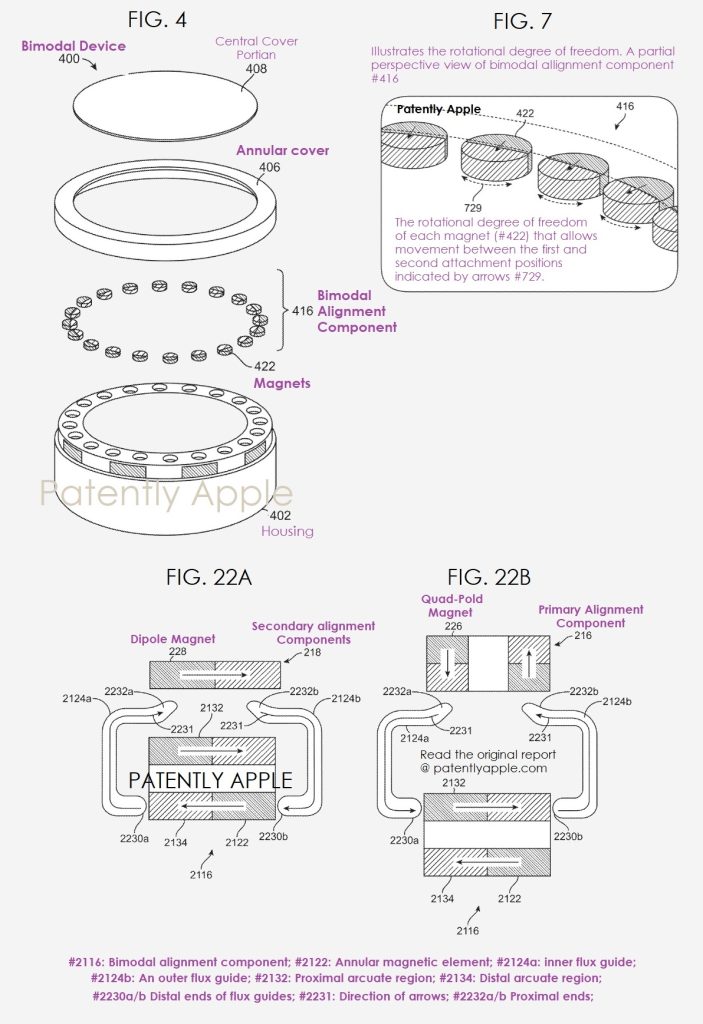
A new Apple patent application discloses the use of a new bimodal reverse charging system on a future iPhone to recharge accessories.
Apple’s patent application for a wireless charging system using bimodal magnetic alignment components was published last Thursday. According to reports, future iPhones may include a wireless charging mechanism for AirPods, the Apple Watch, and other accessories.
To recall, Apple’s existing wireless charging on the back of an iPhone uses a huge coil that can’t charge a watch. Also, reports say that Apple is working on OLED iPad Pros with 11.1-inch and 13-inch screens for 2024.
Apple’s patent summary notes that wireless charging systems use electromagnetic induction to power electronic devices without a connection; with the technology, some portable electronics can be charged by placing them on a wireless charger’s surface.
- An alternating current drives a transmitter coil below the charging surface. This creates a time-varying magnetic flux that causes a current to flow in the portable electronic device’s receiver coil.
- Thus, a portable electronic device can charge its battery with induced current. Some portable electronic gadgets can receive and distribute power wirelessly to other devices, such as accessory products.
Bimodal Magnetic Alignment Components for Alignment of Devices
Apple’s description also states that wireless power transmission efficiency depends on transmitter and receiver coil alignment. Say, for example, that coaxially oriented transmitter and receiver coils could work well, while flat electronic devices without guiding elements might be challenging to orient.
This method can be time-consuming. A lack of surface characteristics might make alignment problematic. If the device and/or charger are jostled during charging, they may become misaligned.
Some electronic devices have magnetic alignment parts that are shaped like rings. These parts can attract and hold two devices in a certain position.
Magnetic alignment systems can have “main” and “secondary” components.
- Each alignment component can have an annular (or ring-shaped) arrangement of magnets with set magnetic polarities that attract each other.
- Adding two separate magnetic alignment parts (one primary and one secondary) could make the device bigger, heavier, and more expensive to make.
Some embodiments of the present invention pertain to bimodal device alignment components. In a bimodal alignment component, the alignment magnets can really be reoriented or repositioned between a first attachment position corresponding to a primary annular alignment component and even a second attachment position complimentary to a secondary annular alignment component.
A device with a bimodal alignment component can be connected to others through a primary or secondary annular alignment component.
In Apple’s patent, Figure 4 shows a simplified exploded view of a bimodal device, and Figure 7 shows a selective perspective view of a bimodal alignment component.

In Apple’s patent, FIGS. 22A and 22B, a bimodal alignment component in two different attachment positions, is shown in streamlined cross-section views.
Do check out Apple’s patent application number, US 20220416590 A1, if you want to get into the details.